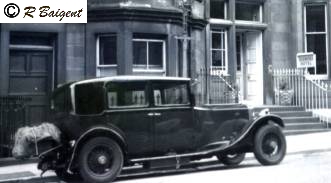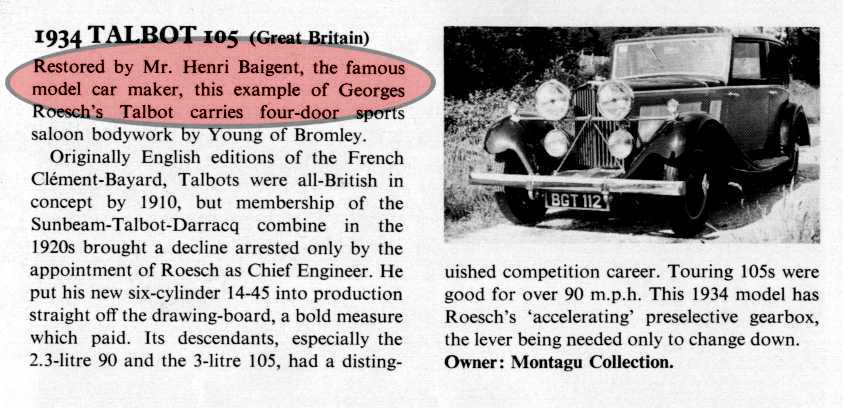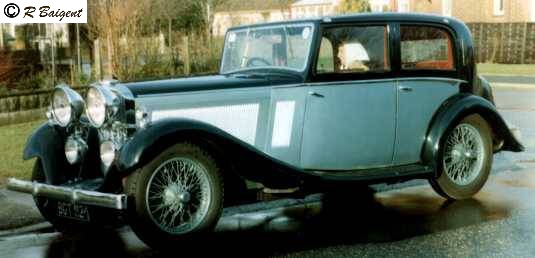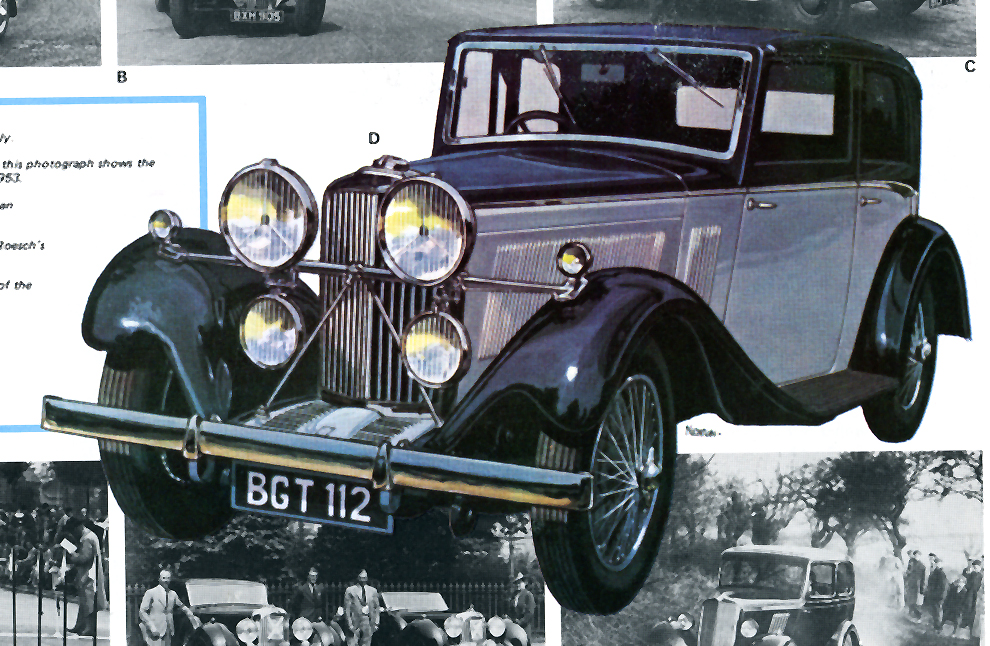
The Full-size Cars and Classic Re-builds
The 1931 Rolls Royce
The Rolls during a tour of Scotland before the rebuild.
During 1958 Henri acquired a 1931 Rolls Royce Hooper Saloon as a payment for work done for a customer. He brought it to my home to show me and was very proud of his latest acquisition. I drove it and found it drove like a 'tank'! I did not like it, but it did seem as though it was in very good condition externally. I detected a rattle very much like gudgeon-pin wear (little-ends). I told him my diagnosis. He was very put out. He said that he could not hear it. That was quite possible as Henri had been deaf in one ear for some years due to working in noisy factory conditions in his working environment when he was a lot younger. I believe that there was an element of denial there too, but he was not giving way. He took it to the Bournemouth Rolls Royce workshops for their opinion and was told that they had never experienced any wear on any Rolls Royce gudgeon-pins, it was not possible. 'They are the experts', Henri said to me. A month or two passed by, then one day when I visited him I saw the Rolls was out of service, with the bonnet (hood) removed. I asked him what he was doing. He said that he was going to repaint the whole car and possibly check the engine as well. How funny human fathers can be when confronted by an embarrassment like that. Later, he decided to dismantle the engine to check the piston-wear! I guess it was clear to him that there was something wrong. The pistons and bores were fine, but the gudgeon-pins were worn! I felt no pleasure in being right, just amused at the result. My hearing has always been exceptionally good, I was very lucky with that sense and with very good eye-sight. Also, I had been rebuilding old cars in my spare time, so I was well acquainted with worn bearing noises as I had suffered somewhat with most of my purchases. All was well after the refurbishment and it looked beautiful in two-tone black and ivory. The Rolls was sold when somebody fell in love with it only months later. I don't know who bought it, but if anyone knows of this car I would be grateful for any information.
The Rolls after renovation and re-painting: click to enlarge images
The 1934 Roesch Talbot 105
1934 Roesch Talbot 105 Sports Saloon before rebuild
During 1960, Henri bought a 1934 Roesch Talbot 105 Sports Saloon with a body by Young of Bromley. He bought if from a most careful owner who was the Chief Engineer of Lombards. He was extremely fussy about everything, but the car had a few knocks and was rather tired looking as he had used it for his work since it was brand new. So it was a one-owner beauty that needed a face-lift and some engine work. Henri bought it for £80. It came complete with all the manuals and a very comprehensive tool-kit which was entire. Its price when new was £805. He worked on it and used it for a while. He let me drive it, I had a race-tuned Mini at the time, and I found that it handled at least as well on a very twisting road that I was very familiar with at the time. There was no general speed limit in the early sixties, speeds were as high as the hems of mini-skirts. The Talbot had a Roesch 'accelerating' preselecting gear-box which was as smooth as silk, and it cornered like a snake.
Henri bought a lovely little puppy to replace his lost Miniature Dachshund and it grew, and it grew, into a very large Irish Wolf-Hound. The RSPCA had said that it was a cross between a Jack RusselI and a small Highland Terrier, when Henri took it in for care. I reckon a cross between a wolf and a mountain lion was more accurate. It was as large as I have seen any dog. The dog would eat, yes eat, completely, Henri's oily old workshop shoes, they must have been revolting, or perhaps the dog was a reincarnation of Charlie Chaplin. Remember the 'Gold Rush'? Charlie was so hungry that he ate the soles of his shoes! Henri fed the dog very well, but the brute would eat anything that was laying around. 'Wolfie' was left in the workshop to guard it at night as there was all sorts of valuable cars garaged in there most of the time including the Ferrari which Henri had to take apart to ensure absolute facsimilising at 1/12th scale including the internals. He had just finished completely replacing all the Talbot's interior with new red Connelly Hide. Wolfie liked it too. When Henri went into the workshop in the morning, he found that the dog had got in through a half-open window and eaten or mauled every piece of the car's interior. It caused enormous expense and wasted a lot of time. I can't remember what happened to Wolfie, but I can guess!
Eventually, the Talbot was sold to the Beaulieu Motor Museum in Hampshire, England. It has been used in films and TV, so when I took my sons to see it during the summer of 1979, the Talbot was less than pristine. When I told the curator who we were, they presented us with the 'Information Desk Reference Copy' of the brochure which I still have to hand and I treasure it a great deal. Below is an extract from that brochure, by kind permission of The Beaulieu Motor Museum.
The Talbot 105 spec: 6-cyl; 2970cc; ohv; 76mm bore x 110mm stroke, a very long-stroke engine with immense pulling power; ignition was coil; 4-speed pre-selector gearbox; foot-brakes on all four wheels; hand-brake on rear wheels only. The model was made from 1931 to 1937.

The Talbot at Beaulieu, after rebuild by Henri
The beautiful walnut dash-panel after refurbishment

above: my mother in the rebuilt car

the Talbot featured in a 1977 Beaulieu catalogue as the main feature on a page
Jaguar Mk 1 triple-carburetor special and his Alfa Romeo Bertone Coupe, two of Henri's other interesting cars